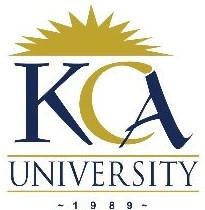
UNIVERSITY EXAMINATIONS: 2010/2011
THIRD YEAR STAGE EXAMINATION FOR THE DEGREE OF BACHELOR
OF SCIENCE IN INFORMATION TECHNOLOGY
BIT 4302: TELECOMMUNICATIONS
DATE: AUGUST 2011 TIME: 2 HOURS
INSTRUCTIONS: Answer question ONE and any other TWO questions
Question One
a) i) Outline distinct features of packet switched and circuit switched networks. [6 Marks]
ii) Explain why the Public Switched Telephone Network (PSTN) is inherently circuit switched
while the data network such as the Internet is inherently packet switche [4 Marks]
iii) Give a qualitative comparison of voice over PSTN and voice over IP. [6 Marks]
b) The table shown gives the data rates for various media:

i) Give reasons why optical fiber has higher data rates compared to copper.
ii) Further, explain possible application situations for both fiber and copper based on
their unique factors.
[5 Marks]
c) Give FOUR significant benefits that result when telecommunications migrates from analog to
digital standards. [4 Marks]
d) Describe the process by which the user’s voice is converted into a digital signal [5 Marks]
Question Two
a) The local loop or last mile is the telecommunications technology used to connect an enterprise
network to larger networks such as the Internet. You are tasked with selecting such a solution for
your enterprise network.
i) Identify any FIVE parameters that can be used to compare various local loop
technologies. [5 Marks]
ii) Compare the following local loop technologies in terms of any FOUR of the FIVE
parameters you have chosen above: Dial-up lines and Modems; ISDN BRI; and
ADSL [6 Marks]
b) Highlight the fundamental differences between a wired telecommunications network and a wireless
telecommunications network. [6 Marks]
c) Give the ITU standard for telephone numbering. [3 Marks]
Question Three
The principal components of a digital telecommunications system used for voice conversations are
source encoding, channel encoding, multiple access, modulation and transmission.
a) Give a brief explanation of the purpose of each stage before transmission. [4 Marks]
b) Give your understanding of converged communications and outline what may be the benefits and
challenges of such communications. [5 Marks]
c) The landing of Optical Fiber connectivity for international Internet connectivity was realized
recently.
i) Highlight what this connectivity option means to corporate organizations in Kenya.
[6 Marks]
ii) A client server system uses a satellite telecommunications network, with the satellite
at a height of 40,000 km. What is the best-case delay in response to a request?
[5 Marks]
Question Four
a) VoIP (Voice over Internet Protocol) involves sending voice transmissions as data packets using the
Internet Protocol (IP), whereby the user’s voice is converted into a digital signal, compressed, and
broken down into a series of packets. The packets are then transported over private or public IP
networks and reassembled and decoded on the receiving side. Residential customers can connect to
IP-based networks by using the local loop from the PSTN or high-speed lines, including
ADSL/DSL and cable modems.
i) Explain the need for compressing the data. [2 Marks]
ii) Give a description of the ADSL local loop solution [8 Marks]
b) Identify the components of a basic telecommunications circuit and explain how the components
affect the power transmitted in the circuit. [6 Marks]
c) Determine the channel capacity for a teleprinter channel with a 300-Hz bandwidth and a signal to
noise ratio of 3 dB (decibels). [4 Marks]
Question Five
a) A simple telephone system consists of two end offices and a single toll office to which each end
office is connected by a 1-MHz full-duplex trunk. Based on your knowledge of the characteristics
of human voice frequency, determine the maximum number of simultaneous voice calls crossing
the trunk. [4 Marks]
b) Give a function for each principal database component in the basic GSM architecture. [4 Marks]
c) State FOUR benefits of bringing digital connectivity through ISDN to the local site. [4 Marks]
d) A user is having a conversation on channel 890.4 MHz (for the GSM 900 system). With the aid of
an appropriate diagram, show the message in the respective slots for both the outgoing channel and
the incoming channel associated with this particular conversation. [4 Marks]
e) Give the full name for the following devices used in an ISDN-network: TE1; TE2; TA; and NT2
[4 Marks]